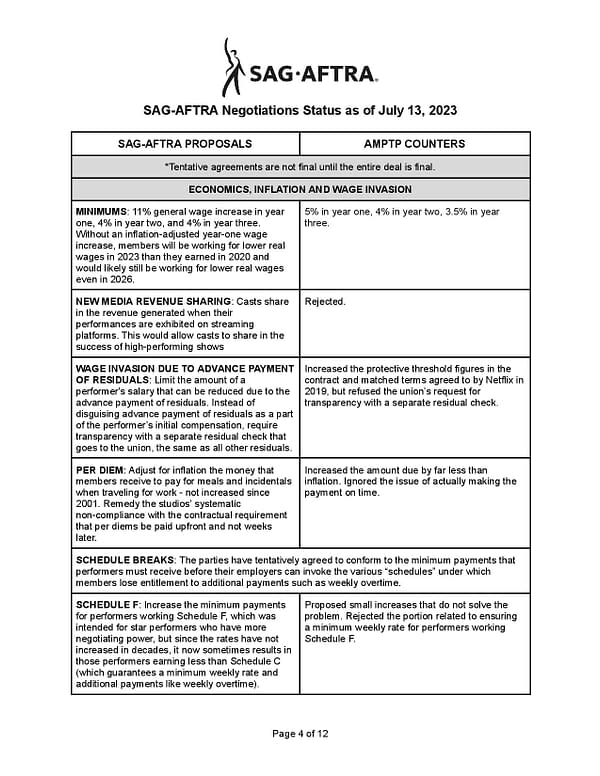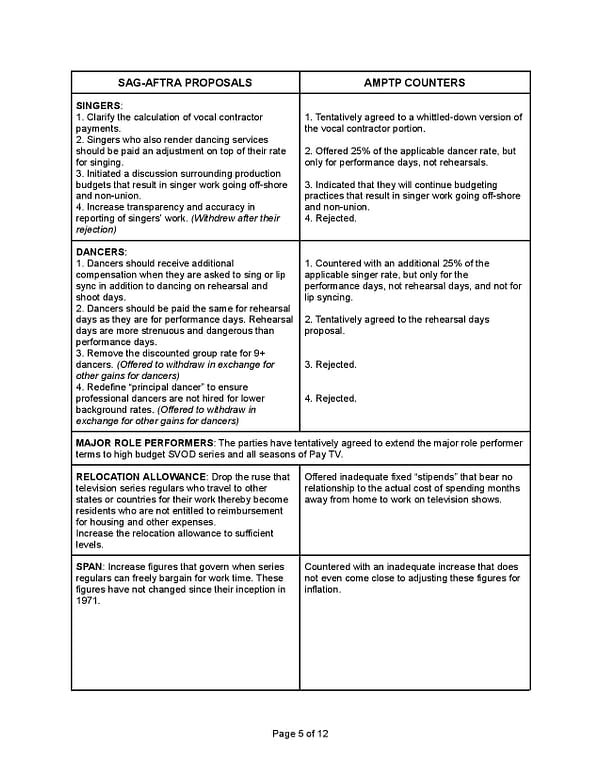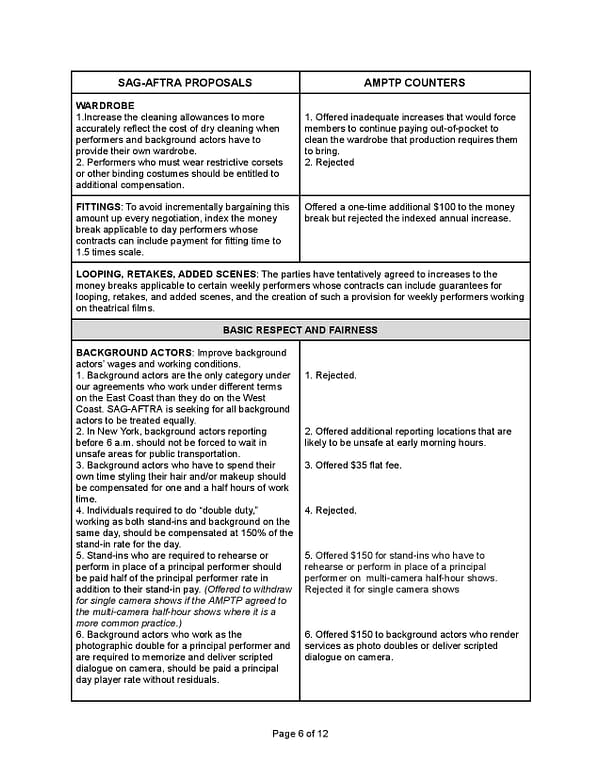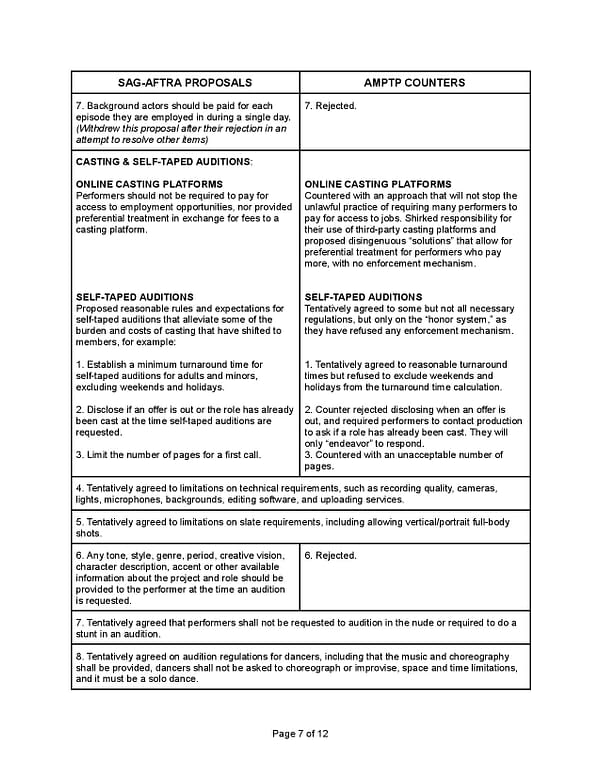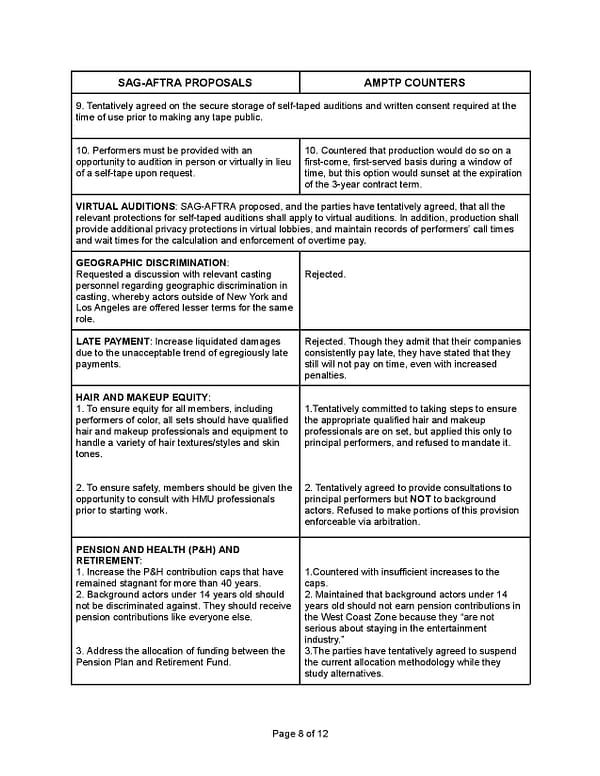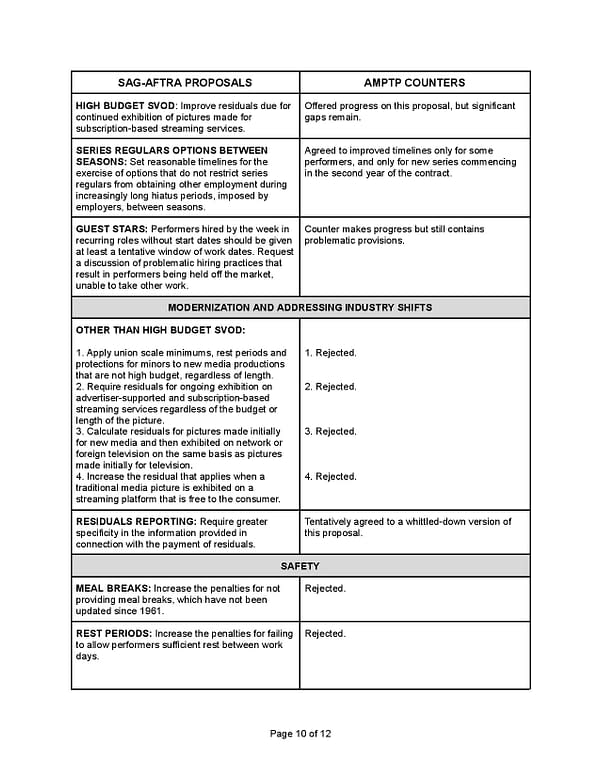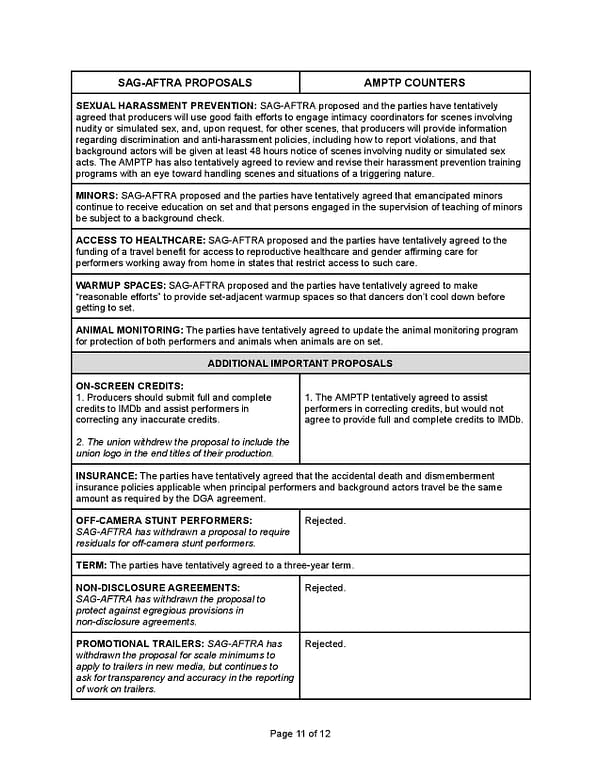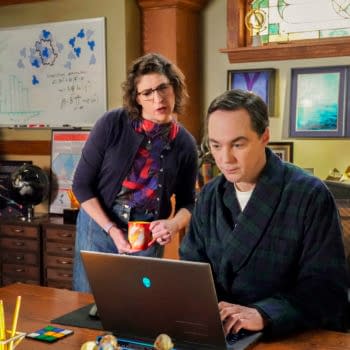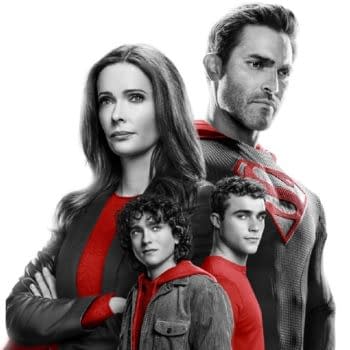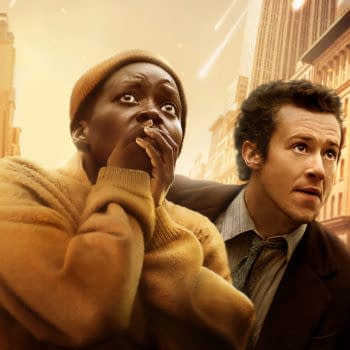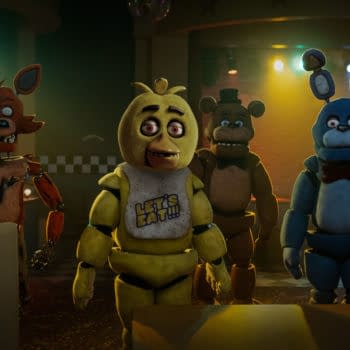Posted in: Movies, streaming, TV | Tagged: amptp, SAG-AFTRA, wga, writers' strike
SAG-AFTRA Chart Shows Union, AMPTP Still Deeply Divided on Key Issues
SAG-AFTRA released a statement and a chart detailing the key issues & differences that are still in play between the union and the AMPTP.
Earlier tonight, The SAG-AFTRA TV/Theatrical Negotiating Committee released a statement and a chart detailing the key issues in play during the negotiations with the Alliance of Motion Picture and Television Producers (AMPTP). "Here's the simple truth: We're up against a system where those in charge of multibillion-dollar media conglomerates are rewarded for exploiting workers," the committee wrote. "The companies are committed to prioritizing shareholders and Wall Street." Here's a look at the message that went live earlier this evening, followed by images of the chart shared by SAG-AFTRA showing where the differences are between the two sides on key issues.
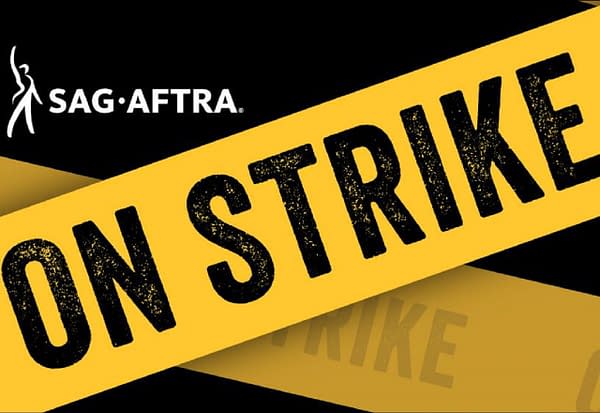
Here's the simple truth: We're up against a system where those in charge of multibillion-dollar media conglomerates are rewarded for exploiting workers.
The companies represented by the Alliance of Motion Picture and Television Producers (AMPTP) — which include Amazon/MGM, Apple, Disney/ABC/Fox, NBCUniversal, Netflix, Paramount/CBS, Sony, Warner Bros. Discovery (HBO), and others — are committed to prioritizing shareholders and Wall Street. Detailed below are some of the key issues of the negotiation and where things stand. We moved on some things, but from day one they wouldn't meaningfully engage on the most critical issues.
- Performers need minimum earnings to simply keep up with inflation.
- Us: We need an 11% general wage increase in year 1 so our members can recover from record inflation during the previous contract term.
- Them: The most we will give you is 5%, even though that means your 2023 earnings will effectively be a significant pay cut due to inflation and it is likely you will still be working for less than your 2020 wages in 2026.
- Performers need the protection of our images and performances to prevent replacement of human performances by artificial intelligence technology.
- Us: Here's a comprehensive set of provisions to grant informed consent and fair compensation when a "digital replica" is made or our performance is changed using AI.
- Them: We want to be able to scan a background performer's image, pay them for a half a day's labor, and then use an individual's likeness for any purpose forever without their consent. We also want to be able to make changes to principal performers' dialogue, and even create new scenes, without informed consent. And we want to be able to use someone's images, likenesses, and performances to train new generative AI systems without consent or compensation.
- Performers need qualified hair and makeup professionals as well as equipment to safely and effectively style a variety of hair textures/styles and skin tones.
- Us: How about consultations with qualified hair and makeup professionals for all performers on set to ensure equity for performers of color, and a requirement to have the proper tools and equipment?
- Them: Begrudgingly, we will do this for principal performers, but background actors are on their own.
- Performers need compensation to reflect the value we bring to the streamers who profit from our labor.
- Us: Consider this comprehensive plan for actors to participate in streaming revenue, since the current business model has eroded our residuals income.
- Them: No.
- All performers need support from our employers to keep our health and retirement funds sustainable.
- Us: Contribution caps haven't been raised in 40 years, imperiling our pension and health plans. Would you consider raising the caps to adjust for inflation and ensure that all performers, regardless of age or location, receive equal contributions?
- Them: Here are some nominal increases nowhere near the level of inflation that won't adequately fund your health plan. Also, background child performers under 14 years of age living in the N.Y. zone don't deserve pension contributions, which is why we haven't paid them since 1992.
- Principal performers need to be able to work during hiatus and not be held captive by employers.
- Us: These timelines we've proposed help series regulars by limiting the increasingly long breaks between seasons and giving them some certainty as to when they'll start work again or will be released.
- Them: Take these select few improvements that will only help a select few.
- Principal performers need to be reimbursed for relocation expenses when they're employed away from home.
- Us: Drop the ruse that series regulars are becoming residents of a new state or country when they go on location and adequately pay them for all of their relocation costs.
- Them: Here's some stipends which don't realistically reflect the cost of relocating to an out-of-state or out-of-country production.
We marched ahead because they intentionally dragged their feet.
After we agreed to their compressed bargaining schedule, the AMPTP subjected us to repeated stonewalling and delay. It took more than four weeks of bargaining for the AMPTP to agree to simple basic issues of fairness and respect, such as:
- Access to reproductive healthcare and gender affirming care for performers working away from home in states that restrict medical access.
- A consultation process to guard against racist and sexist "wiggings" and "paintdowns" of stunt performers.
- Safety for performers working with animals on set.
Is this enough? We need transformative contracts, yet remain far apart on the most critical issues that affect the very survival of our profession. Specifically, we need fair compensation that accounts for inflation, revenue sharing on top of residuals, protection from AI technology, and updates to our pension and health contribution caps, which haven't been changed in decades.
This is why we're on strike. The AMPTP thinks we will relent, but the will of our membership has never been stronger. We have the resolve and unity needed to defend our rights.
Here's a look at copies of the chart that The SAG-AFTRA TV/Theatrical Negotiating Committee included with their message to their membership that "reflects our proposals and illustrates just how far apart we remain on key issues." In addition, what follows "also indicates where we've reached tentative agreements, as well as proposals strategically withdrawn as part of the negotiating process." Here's a look:
